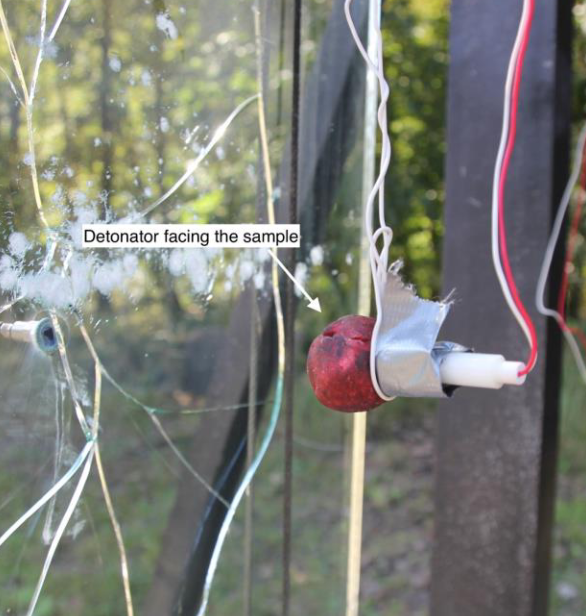Freely Hanging Multi-Layer Laminated Glass Subjected to Near-Field Blast

Abstract
Laminated glass holds promise as a resilient building material with the potential for successful application under explosive conditions. This study investigates the dynamic response of freely hanging laminated glass to near-field blast loading. Experimental trials were conducted, examining two laminated glass configurations: a 5-layer setup and a 7-layer setup. Panels were designed using the sacrificial glass ply concept, comprising alternating layers of glass panels and polyvinyl butyral interlayers. The experimental methodology involved two types of explosives: Semtex 1A and granulated TNT. The samples were suspended on wire rope slings to eliminate support influences and allow comparison with numerical models. Samples were incrementally loaded with explosive weights to estimate the minimum impact energy required for glass failure. The overpressure from the blast was recorded and the response of the panels in terms of the acceleration, as well as crack formation and propagation, was studied. Accelerometers were affixed to each panel, whereas the crack development was examined after each test. The experimental results were compared to a numerical model. The study explores cracks based on numerous parameters like number of blasts and glass configuration. It also shows how different parameters impact panel velocity under blast and how damage affects their natural frequency. Comparison with numerical models shows that the setup accurately replicates the absence of supports.
Published
Issue
Section
Laminated Glass & Interlayer Properties
License
Copyright (c) 2024 Alžběta Kohoutová, Paolo Del Linz, Přemysl Kheml, Petr Konrád, Petr Hála

This work is licensed under a Creative Commons Attribution 4.0 International License.



